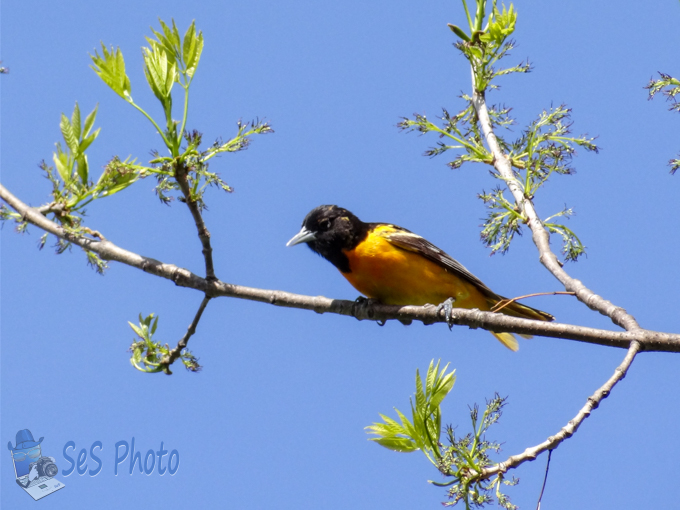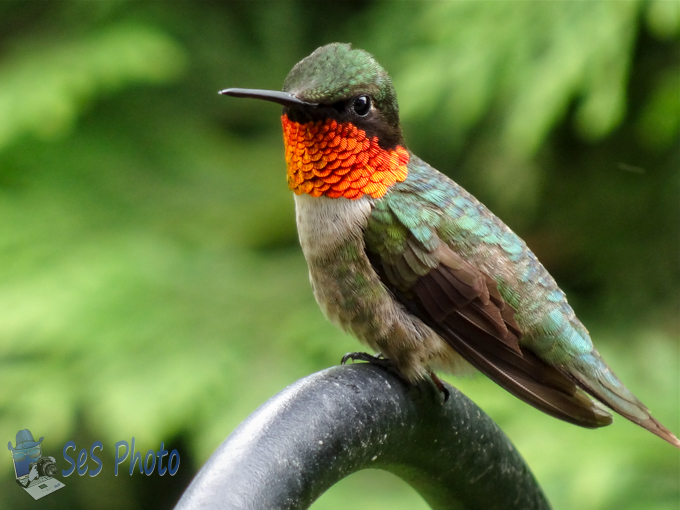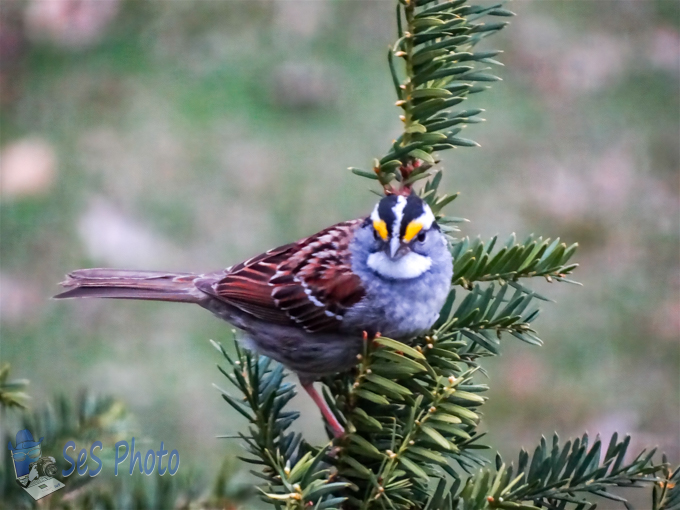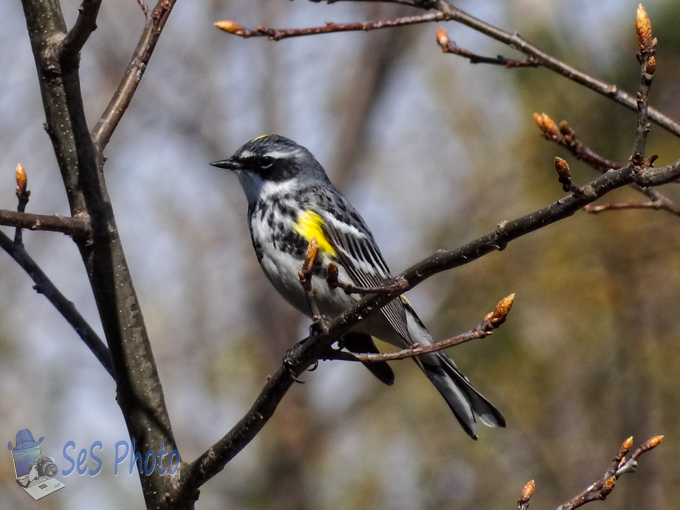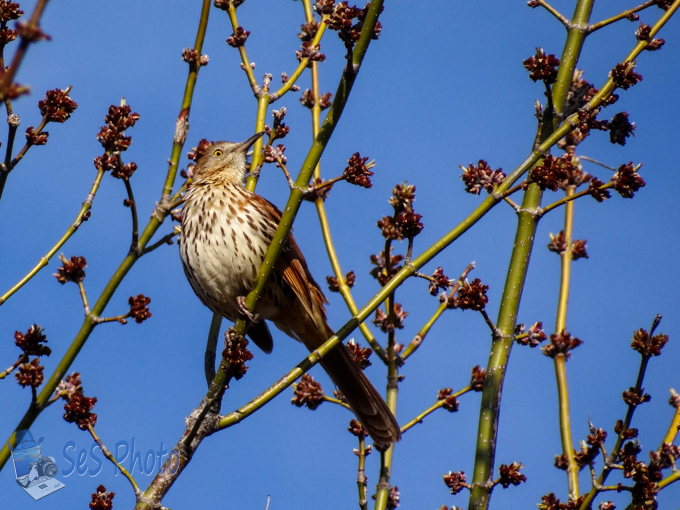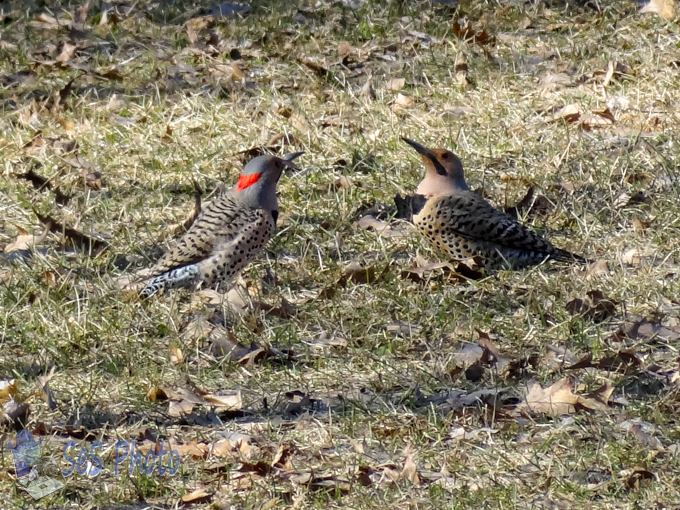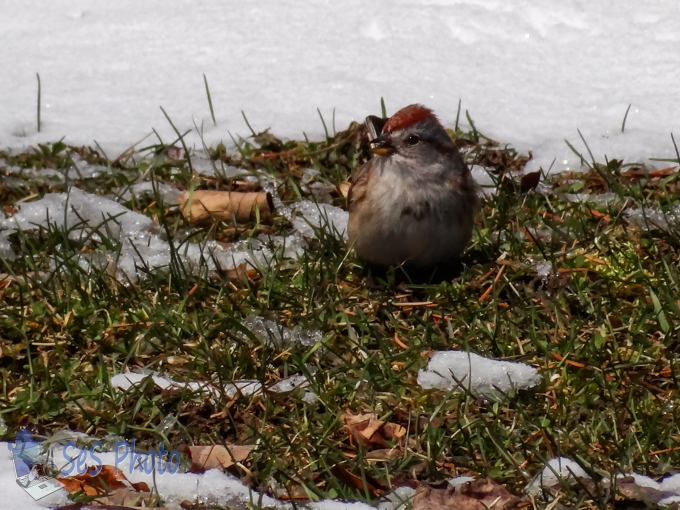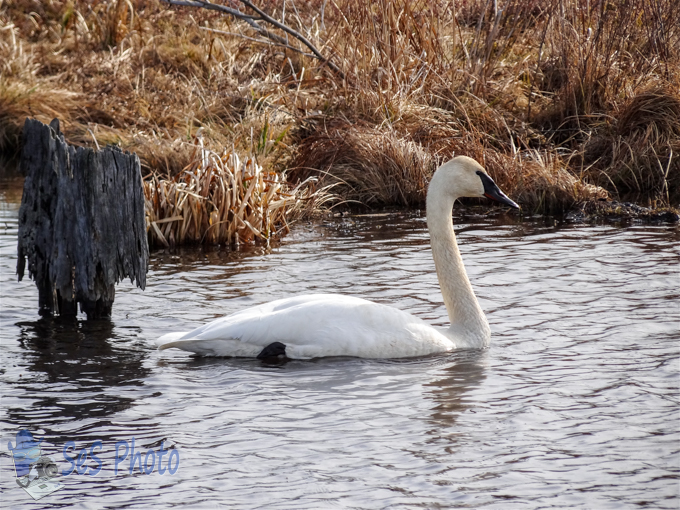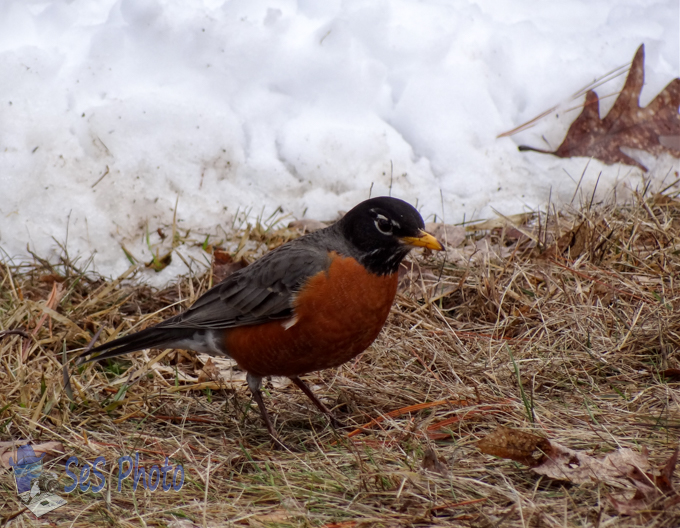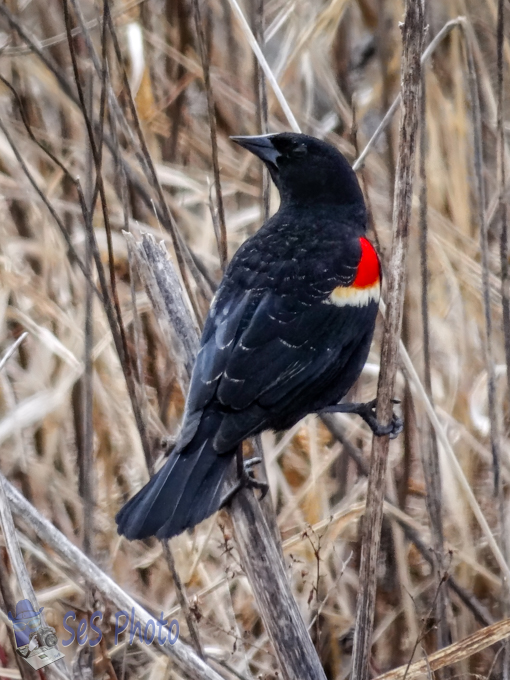With the trees beginning to leaf out, the orioles have arrived. And they must have been hungry from their trip north as one sugar water feeder was already empty and the other probably will need filling in the morning too. The Baltimore Orioles young males do not molt into their bright orange color until the fall of their second year.
Baltimore Oriole Arrived


